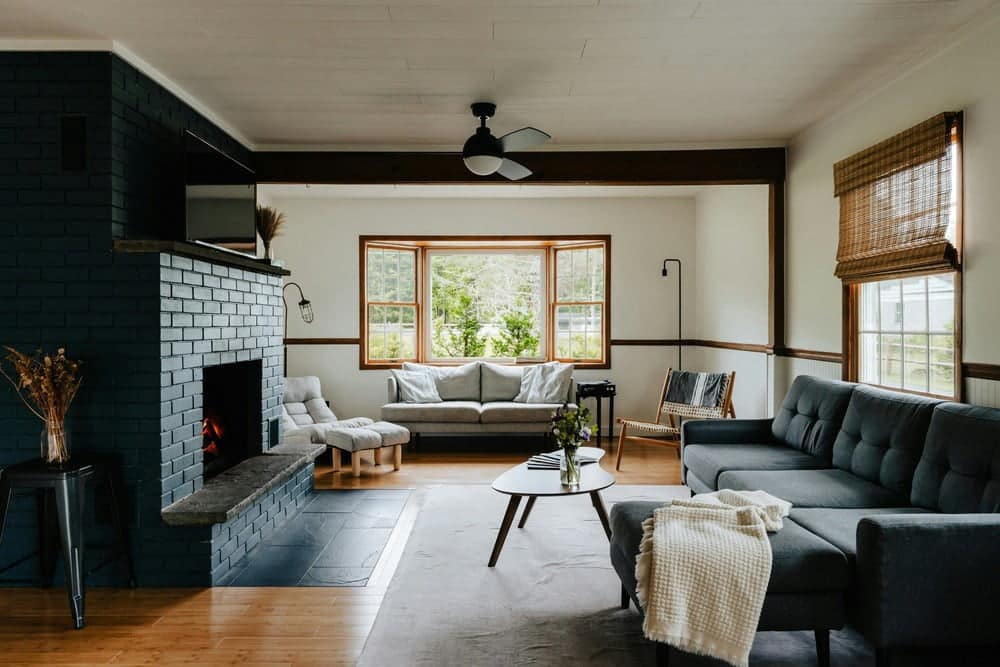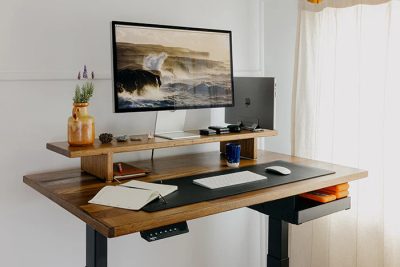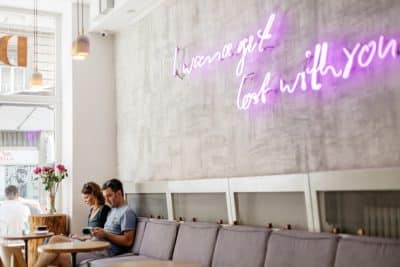
Homes carry more weight than they once did. What used to be a place to rest is now also where people work, recharge, think, and reset. This shift has led to a growing need for pockets of quiet—places to draw a breath, engage with a hobby, or simply stop reacting to the noise of daily life. Not everyone has extra rooms or large studios, but most homes have small, underused spaces that can be transformed with minimal effort.
Creating corners for mindful living doesn’t require a full renovation or complex design plan. It’s about function and feel—designating even one small area for a specific kind of calm. Whether it’s creative focus, quiet reading, or physical recovery, these spaces make a meaningful difference. With the right tools, light, and intention, any corner can become a point of pause in a fast-moving home.
The Creative Corner – Space to Refocus
A creative corner is a reset point. It offers a break from screen-based thinking, supports hands-on focus, and gently pulls the mind out of stress loops. Creative hobbies like painting, sketching, or journaling slow down thought and build a deeper kind of concentration. These activities don’t require massive spaces—just a well-planned area with clear purpose and calm energy. The goal is not perfection but function. A space that invites quiet attention and makes it easy to start.
Create Focus with Simplicity
This corner should invite stillness, not scatter it. Choose a low-traffic area with decent light—by a window, near a hallway, or beside a bookcase. Keep visual distractions to a minimum. A compact desk, a fold-down wall table, or a clean tabletop works well. Add a chair with a soft cushion and a blanket nearby for comfort. Keep the color palette subdued—soft greys, warm whites, and natural tones reduce mental clutter.
Light Makes a Difference
Natural light supports both mood and focus. If that’s not available, use a warm-toned desk lamp with a flexible neck. Avoid bright white or fluorescent lighting. The goal is a calm glow, not a spotlight.
Make Room for Creativity
The tools should be easy to access but not overbearing:
- A closed box for art supplies
- A small rack for paper or notebooks
- A shelf for works in progress
Introduce a consistent creative habit. Painting by numbers fits well in this kind of space. Number Artist paint kits are especially effective here. These kits don’t require previous skill, yet they offer the satisfying process of completing a work slowly, with care. The act itself is quieting. The final product—something handmade—adds a personal layer to the home.
Keep the Noise Down
Creative focus doesn’t mix with constant interruption. If the home is active, use noise-dampening headphones or a small white noise machine to block out distraction. Background music works well too—ideally instrumental or ambient, with no sudden shifts in tempo.
This space should always be ready to use. No complex setup. No hidden tools. Just a spot to sit down, breathe, and create.
The Quiet Reset – Design for Stillness and Calm
While the creative corner supports doing, the quiet reset space supports not doing. It’s a pause button built into the home. This space doesn’t need structure—it needs softness. A place to lie down, read a page, close your eyes for five minutes, or feel a warm mug in your hand. The smallest shift in layout can give a room new function. Even a window ledge or hallway can become a calm zone with a few simple changes.
Less Is More
This corner should feel open, not filled. Start with a floor cushion, a chair with a high back, or a corner of a bed cleared of clutter. Then add one or two tactile objects—a throw blanket, a soft rug, or a well-worn book. Think of it as subtractive design: clear away until what’s left feels calming, not empty.
Choose Supportive Light and Sound
Light matters here too. A small table lamp with a soft glow can create instant calm. Add a small dish for essential oils or incense, but keep scents gentle and familiar. The brain links scent to mood faster than most other senses.
Sound should remain subtle. Soft instrumental music, gentle nature sounds, or silence all work well. If outside noise is an issue, white noise machines or smart speakers with calming audio tracks help reset the environment.
Anchor It with Rituals
This corner doesn’t need to be active. It can support rituals like:
- Morning journaling
- Quiet stretching
- Tea at night
- Breathing exercises
A paint-by-number kit also works in this setting. It’s a tactile activity that doesn’t demand much from the mind but keeps the hands engaged. Having one nearby encourages use, especially at the end of a long day when focus is harder to summon.
The key is availability. The space should always feel like an option, not a task.
The Recovery Corner – A Space for Physical Recharge
While calm and creativity support the mind, recovery supports the body. This is where physical wellness practices fit naturally into the home. A recovery corner doesn’t need a fitness vibe. It’s not a gym or training zone. It’s slower, quieter, and more personal. Stretching, breathing, cold exposure, and physical reset tools all belong here. The space can be outside, in a bathroom, or part of a garage. What matters is consistency and purpose.
Plan the Basics
Start with function. Is the space for stretching? Recovery after exercise? Morning wake-up routines? Choose tools accordingly:
- Yoga mat or padded floor section
- Foam rollers or massage balls
- Compact storage for towels or recovery gear
Use natural tones to soften the area. Keep lighting adjustable—this space moves between activation and rest.
Introduce Cold Therapy
More people are turning to cold immersion as a recovery method. It helps reduce inflammation, boost circulation, and train focus under physical stress. For home use, this practice is becoming more accessible. The modern ice bath chiller replaces the unpredictable process of filling a tub with ice. It delivers controlled, consistent cold without the daily hassle.
Chillers are now compact and clean. They can fit into side patios, unused corners of a bathroom, or even converted tubs. With the right placement, it becomes part of a regular habit—easy to access and easy to maintain.
Set the Mood for Reset
This corner isn’t only about the cold. It’s about contrast. Pair the chill with warm towels or a post-plunge stretching zone. Add a stool, a small basket for dry clothes, or a spot for a warm drink afterward.
The experience is physical, but it touches everything—energy, clarity, mood. Having a space where the body resets gives the rest of the home breathing room. It’s not about discipline or intensity. It’s about showing up for five minutes and letting the practice do the work.
Conclusion
Peace doesn’t take over an entire home. It starts in corners. With the right space for creativity, stillness, or recovery, each day has a better rhythm. These spaces don’t need to be large. They need to be clear, cared for, and ready when needed. Whether it’s picking up a brush, taking a breath, or stepping into cold water, a mindful corner brings the body and mind back to center—one quiet moment at a time.









